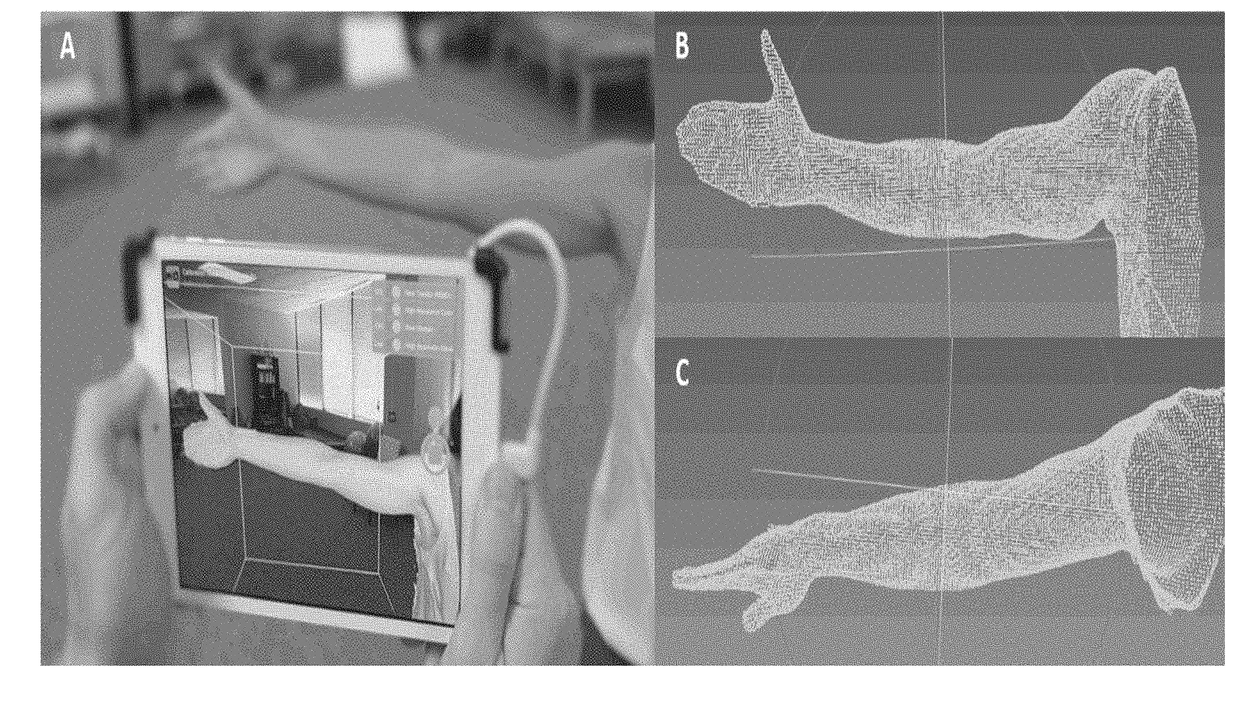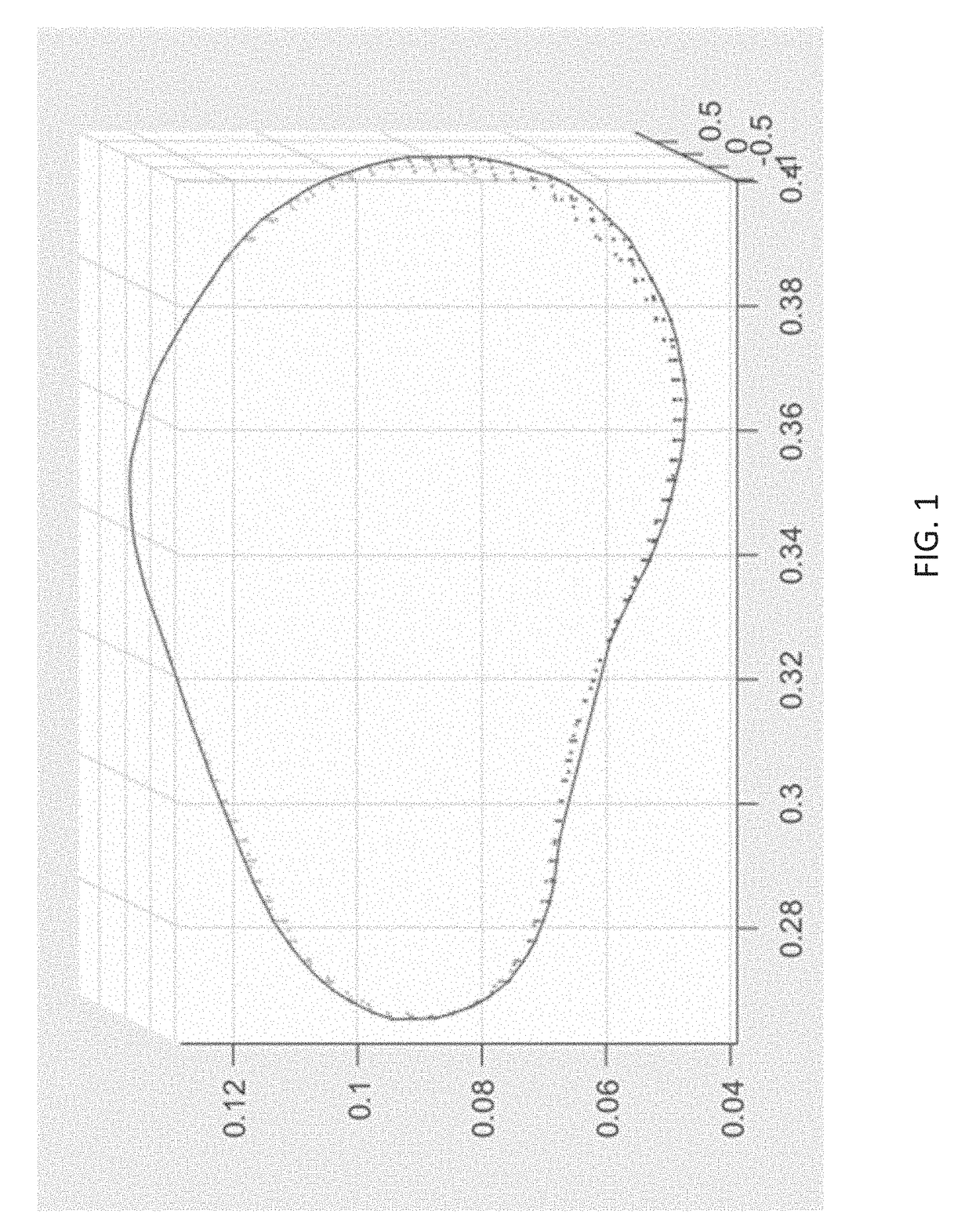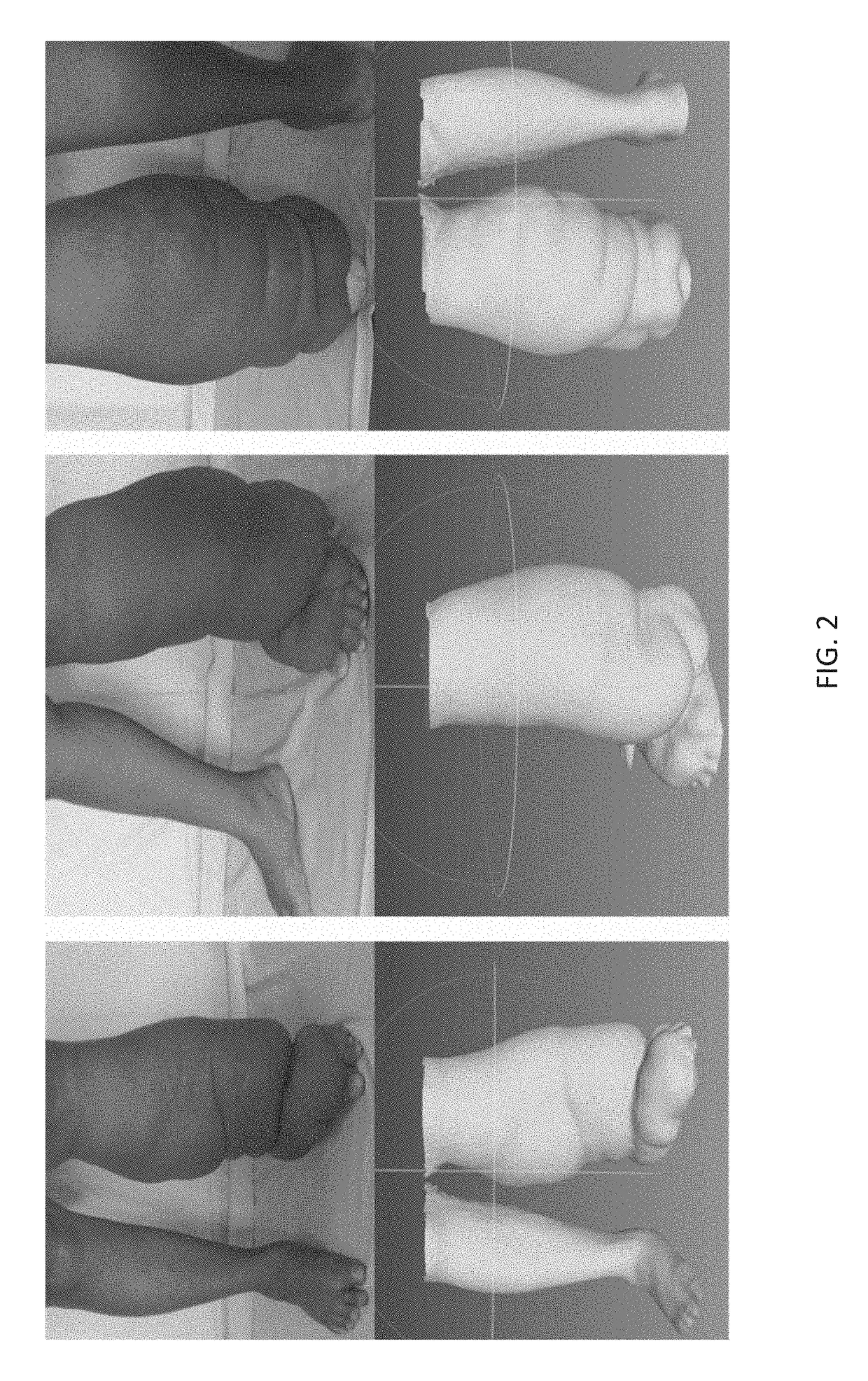Methods of generating compression garment measurement information for a patient body part or body area of interest and use thereof
a technology of compression garments and measurement information, which is applied in the field of compression garment measurement information generation for a patient body part or body area of interest and use thereof, can solve the problems of more damage, inconvenient use, and difficulty in adjusting the shape of human body parts or body areas that may be fitted with compression garments. , to achieve the effect of reducing pinching or chaffing of the patien
- Summary
- Abstract
- Description
- Claims
- Application Information
AI Technical Summary
Benefits of technology
Problems solved by technology
Method used
Image
Examples
Embodiment Construction
[0023]FIG. 1 illustrates a non-circular cross-section indicative of an arm.
[0024]FIG. 2 illustrates images of a patient with Stage 3 lymphedema on a lower leg.
[0025]FIG. 3 illustrates a collection of compression garment configurations that can be generated with the methodology of the present invention.
[0026]FIG. 4 provides an overview of a process of the present invention.
[0027]FIG. 5 is a schematic diagram illustrating an example of a computing system for implementing body shape description and measurement, in accordance with various embodiments of the present disclosure.
[0028]FIG. 6 illustrates a point cloud generated from a plurality of digital images of a patient's leg, where a shape description and measurement information can be derived therefrom.
[0029]FIG. 7 shows part of an image acquisition technique for a handheld technique.
DETAILED DESCRIPTION OF THE INVENTION
[0030]In the following detailed description, reference is made to the accompanying drawings, which form a part here...
PUM
 Login to View More
Login to View More Abstract
Description
Claims
Application Information
 Login to View More
Login to View More - R&D
- Intellectual Property
- Life Sciences
- Materials
- Tech Scout
- Unparalleled Data Quality
- Higher Quality Content
- 60% Fewer Hallucinations
Browse by: Latest US Patents, China's latest patents, Technical Efficacy Thesaurus, Application Domain, Technology Topic, Popular Technical Reports.
© 2025 PatSnap. All rights reserved.Legal|Privacy policy|Modern Slavery Act Transparency Statement|Sitemap|About US| Contact US: help@patsnap.com



